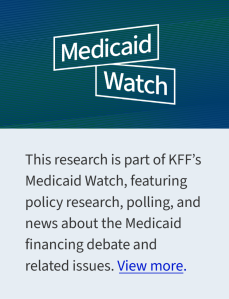Article Summary
Medicaid plays a critical role in providing family planning services, including contraception and reproductive health care, to low-income women across the U.S. With Congress considering federal spending cuts that could remove 7.6 million people from Medicaid, access to these essential services is at risk. Medicaid is the largest public payer for family planning, covering one in five women of reproductive age, and its potential reductions could disproportionately affect low-income individuals. This article highlights Medicaid’s importance in ensuring equitable access to family planning care and the potential consequences of proposed policy changes.
What This Means for You
- If you rely on Medicaid for family planning services, stay informed about potential changes to the program that could affect your access to care.
- Advocate for Medicaid expansion in your state, as it significantly increases access to reproductive health services for low-income women.
- Explore local family planning clinics and community health centers as alternatives if Medicaid coverage becomes restricted.
- Monitor legislative developments to understand how proposed Medicaid cuts could impact your reproductive health options.
5 Key Facts About Medicaid and Family Planning
 Most women use contraception at some point in their lives, and for low-income women in particular, Medicaid provides access to family planning services, including contraceptives and preventive care. Congress is considering changes to Medicaid that could lead to millions losing coverage. As the largest public payer for family planning, reductions in Medicaid could severely impact access to care. Here are five essential facts about Medicaid’s role in family planning.
Most women use contraception at some point in their lives, and for low-income women in particular, Medicaid provides access to family planning services, including contraceptives and preventive care. Congress is considering changes to Medicaid that could lead to millions losing coverage. As the largest public payer for family planning, reductions in Medicaid could severely impact access to care. Here are five essential facts about Medicaid’s role in family planning.
1. Medicaid covers a significant portion of low-income women of reproductive age.
Medicaid provides health coverage for one in five women aged 18-49 and over 40% of low-income women in this age group. Coverage varies by state, from 22% in Texas to 61% in New York and New Mexico.
2. All state Medicaid programs cover family planning services.
Federal law mandates that Medicaid cover family planning, including contraceptives, STI testing, and reproductive health services, with a 90% federal match rate.
3. Medicaid reduces cost barriers for contraception and family planning.
Federal law prohibits out-of-pocket charges for Medicaid family planning services, ensuring access for low-income women and reducing unintended pregnancies.
4. Many Medicaid enrollees rely on specialized clinics like Planned Parenthood.
Planned Parenthood and similar clinics provide family planning services to Medicaid enrollees, but proposed legislation could exclude these providers, risking access gaps.
5. Over half of states offer Medicaid family planning programs for the uninsured.
31 states extend Medicaid family planning coverage to uninsured individuals, helping bridge gaps in reproductive health care access.
People Also Ask About
- What services does Medicaid cover for family planning? Medicaid covers contraceptives, STI testing, gynecologic exams, and reproductive health services.
- How does Medicaid expansion affect family planning access? Medicaid expansion increases coverage and access to family planning services for low-income women.
- Can I get family planning services if I’m uninsured? Many states offer Medicaid family planning programs for uninsured individuals.
- What happens if Planned Parenthood is excluded from Medicaid? Excluding Planned Parenthood could lead to clinic closures and reduced access to reproductive health care.
Expert Opinion
Medicaid is a cornerstone of reproductive health care for low-income women, ensuring access to essential family planning services. Proposed cuts and restrictions could undermine decades of progress, disproportionately affecting vulnerable populations. Policymakers must prioritize equitable access to care to safeguard public health outcomes.
Key Terms
- Medicaid family planning services
- Low-income reproductive health care
- Contraceptive access and Medicaid
- Medicaid expansion and family planning
- Planned Parenthood and Medicaid funding
ORIGINAL SOURCE:
Source link




